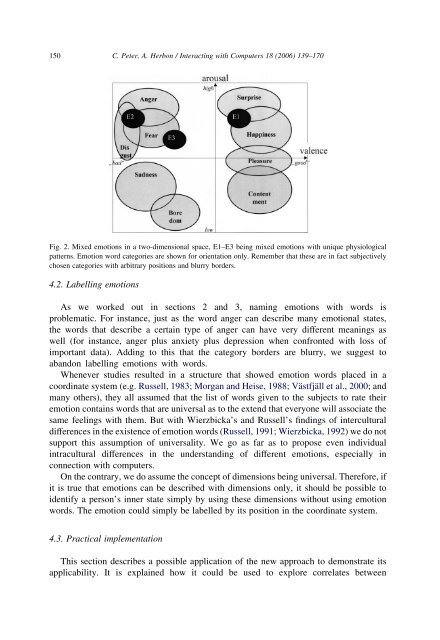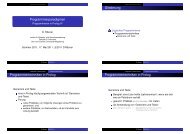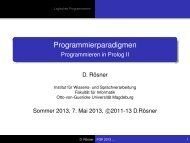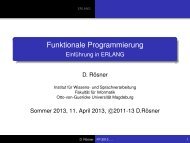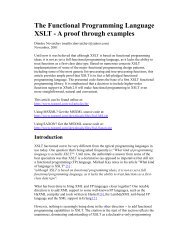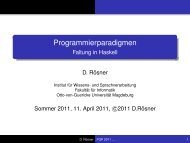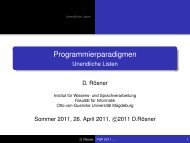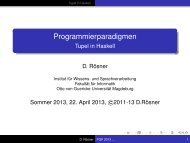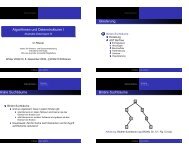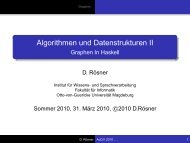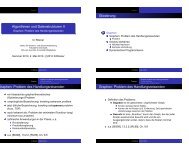Emotion representation and physiology assignments in digital systems
Emotion representation and physiology assignments in digital systems
Emotion representation and physiology assignments in digital systems
Create successful ePaper yourself
Turn your PDF publications into a flip-book with our unique Google optimized e-Paper software.
150<br />
C. Peter, A. Herbon / Interact<strong>in</strong>g with Computers 18 (2006) 139–170<br />
Fig. 2. Mixed emotions <strong>in</strong> a two-dimensional space, E1–E3 be<strong>in</strong>g mixed emotions with unique physiological<br />
patterns. <strong>Emotion</strong> word categories are shown for orientation only. Remember that these are <strong>in</strong> fact subjectively<br />
chosen categories with arbitrary positions <strong>and</strong> blurry borders.<br />
4.2. Labell<strong>in</strong>g emotions<br />
As we worked out <strong>in</strong> sections 2 <strong>and</strong> 3, nam<strong>in</strong>g emotions with words is<br />
problematic. For <strong>in</strong>stance, just as the word anger can describe many emotional states,<br />
the words that describe a certa<strong>in</strong> type of anger can have very different mean<strong>in</strong>gs as<br />
well (for <strong>in</strong>stance, anger plus anxiety plus depression when confronted with loss of<br />
important data). Add<strong>in</strong>g to this that the category borders are blurry, we suggest to<br />
ab<strong>and</strong>on labell<strong>in</strong>g emotions with words.<br />
Whenever studies resulted <strong>in</strong> a structure that showed emotion words placed <strong>in</strong> a<br />
coord<strong>in</strong>ate system (e.g. Russell, 1983; Morgan <strong>and</strong> Heise, 1988; Västfjäll et al., 2000; <strong>and</strong><br />
many others), they all assumed that the list of words given to the subjects to rate their<br />
emotion conta<strong>in</strong>s words that are universal as to the extend that everyone will associate the<br />
same feel<strong>in</strong>gs with them. But with Wierzbicka’s <strong>and</strong> Russell’s f<strong>in</strong>d<strong>in</strong>gs of <strong>in</strong>tercultural<br />
differences <strong>in</strong> the existence of emotion words (Russell, 1991; Wierzbicka, 1992)wedonot<br />
support this assumption of universality. We go as far as to propose even <strong>in</strong>dividual<br />
<strong>in</strong>tracultural differences <strong>in</strong> the underst<strong>and</strong><strong>in</strong>g of different emotions, especially <strong>in</strong><br />
connection with computers.<br />
On the contrary, we do assume the concept of dimensions be<strong>in</strong>g universal. Therefore, if<br />
it is true that emotions can be described with dimensions only, it should be possible to<br />
identify a person’s <strong>in</strong>ner state simply by us<strong>in</strong>g these dimensions without us<strong>in</strong>g emotion<br />
words. The emotion could simply be labelled by its position <strong>in</strong> the coord<strong>in</strong>ate system.<br />
4.3. Practical implementation<br />
This section describes a possible application of the new approach to demonstrate its<br />
applicability. It is expla<strong>in</strong>ed how it could be used to explore correlates between


